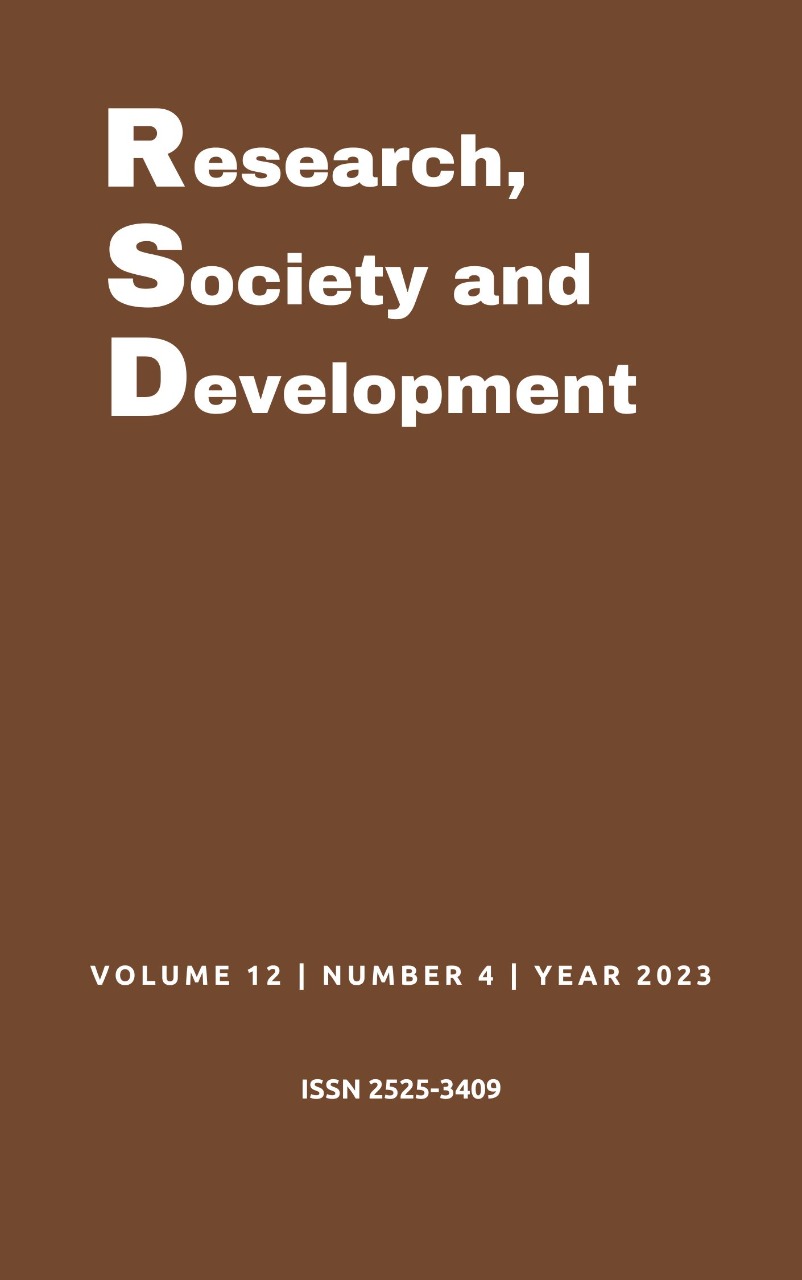Sequential climatological water balance as a tool for agricultural planning
DOI:
https://doi.org/10.33448/rsd-v12i4.41001Keywords:
Agriculture, Olericulture, Tomato.Abstract
Tomato (Solanum lycopersicum) is an important vegetable produced in Brazil, with socioeconomic relevance especially for the State of Amazonas, where it represents a source of income for family farmers. The production of seedlings is an important step, but limited by the cost and quality of the substrates, and the use of agro-industrial residues can be a solution. Different mixtures of substrates with different watering shifts were evaluated to obtain better sources and combinations of substrates, including açaí seeds and/or açaí kernels, chicken manure and soil, with 1-day or 2-day watering shifts. The experimental design was completely randomized, with six treatments with four replications and four plants in each replication, totaling 32 pots. The parameters of dry and fresh matter production of the aerial part and root system, as well as the length of the aerial part and the roots of the plant were evaluated. The effect of the treatments was statistically evaluated by the Tukey test at 5% probability, and the water storage in the soil was evaluated by the Sequential Climatological Water Balance. The research concluded that adequate irrigation management is necessary in the months of August and September for the tomato crop. Plants with one watering shift had better results than those with two days. The treatment açaí seeds + chicken manure 1:1 with a 1-day watering shift was the most effective.
References
Abreu, M. C., & Tonello, K. C. (2015). Estimativa do balanço hídrico climatológico da bacia hidrográfica do rio Sorocaba–São Paulo Estimate of the water balance of the Sorocaba river watershed–SP. Ambiência, 11(3), 513-527.
Amaro, G. B., da Silva, D. M., Marinho, A. G., & Nascimento, W. M. (2007). Recomendações técnicas para o cultivo de hortaliças em agricultura familiar. Embrapa Hortaliças. Circular Técnica.
Andriolo, J. L., Duarte, T. S., Ludke, L., & Skrebsky, E. C. (1999). Caracterização e avaliação de substratos para o cultivo do tomateiro fora do solo. Horticultura brasileira, 17, 215-219.
Borguini, R. G., & Silva, M. V. (2009). Características físico-químicas e sensorias do tomate (Lycopersicon esculentum) produzido por cultivo orgânico em comparação ao convencional. Alimentos e Nutrição Araraquara, 16(4), 355-361.
Campanharo, M., Rodrigues, J. J. V., Junior, M. D. A. L., Espindula, M. C., & da Costa, J. V. T. (2006). Características físicas de diferentes substratos para produção de mudas de tomateiro. Revista Caatinga, 19(2), 140-145.
Campolin, A. I., & Feiden, A. (2011), Metodologias Participativas em Agroecologia; Embrapa Pantanal.
Carmello, Q. A. D. C. (1995). Nutrição e adubação de mudas hortícolas. Produção de mudas de alta qualidade em horticultura, 27-37.
Costa, L. A. D. M. et al. (2013). Avaliação de substratos para a produção de mudas de tomate e pepino. Revista Ceres, 60, 675-682.
de Matos, R. M., da Silva, P. F., de Medeiros, R. M., dos Santos, B. D. B., Barros, A. S., Neto, J. D., & Saboya, L. M. F. (2020). Balanço hídrico climatológico normal e sequencial para o município de Barbalha-CE. Revista Brasileira de Geografia Física, 13(3), 973-982.
Fernandes, C., & Corá, J. (2001). Substratos Hortícolas-Cultivar Hortaliças e Frutas, n. 10, 32-34.
Horikoshi, A. S., & Fisch, G. (2007). Balanço hídrico atual e simulações para cenários climáticos futuros no Município de Taubaté, SP, Brasil. Ambiente & Água-An Interdisciplinary Journal of Applied Science, 2(2), 33-46.
INMET. Instituto Nacional de Meteorologia.2021. http://www.inmet.gov.br.
Leal, M. A. D. A., Guerra, J. G. M., Peixoto, R. T., & de Almeida, D. L. (2007). Utilização de compostos orgânicos como substratos na produção de mudas de hortaliças. Horticultura Brasileira, 25, 392-395.
Marouelli, W. A., da Silva, H. R., & Silva, W. D. C. (2012). Irrigação do tomateiro para processamento. Embrapa Hortaliças-Circular Técnica (INFOTECA-E), 2012.
de Medeiros, R. M., & de Holanda, R. M. (2020). Balanço hídrico sequencial para Lagoa Seca–Paraíba–Brasil. Research, Society and Development, 9(7), e643974691-e643974691.
Oliveira, L. K. B. D., Costa, R. S. D., Santos, J. L. G. D., Lima, F. D. O., Amorim, A. V., & Marinho, A. B. (2018). Respostas fisiológicas de tomateiros cereja a diferentes fontes de adubos orgânicos. Revista Brasileira de Agricultura Irrigada, 12(4), 2799-2807.
Passos, M. L. V., Zambrzycki, G. C., & Pereira, R. S. (2016). Balanço hídrico e classificação climática para uma determinada região de Chapadinha-MA. Revista Brasileira de Agricultura Irrigada, 10(4), 758-766.
Pereira, A. R., Angelocci, L. R., & Sentelhas, P. C. (2002). Agrometeorologia: fundamentos e aplicações práticas. Guaíba: Agropecuária, 478.
Thornthwaite, C. W. (1955). The water balance. Public. in Climatol., 8(1), 1-104.
Urbano Terrón, P. (1992). Tratado de fitotecnia general. Ediciones Mundi-Prensa, 895.
Downloads
Published
Issue
Section
License
Copyright (c) 2023 Marcos Felipe dos Santos Lopes; Eronildo Braga Bezerra

This work is licensed under a Creative Commons Attribution 4.0 International License.
Authors who publish with this journal agree to the following terms:
1) Authors retain copyright and grant the journal right of first publication with the work simultaneously licensed under a Creative Commons Attribution License that allows others to share the work with an acknowledgement of the work's authorship and initial publication in this journal.
2) Authors are able to enter into separate, additional contractual arrangements for the non-exclusive distribution of the journal's published version of the work (e.g., post it to an institutional repository or publish it in a book), with an acknowledgement of its initial publication in this journal.
3) Authors are permitted and encouraged to post their work online (e.g., in institutional repositories or on their website) prior to and during the submission process, as it can lead to productive exchanges, as well as earlier and greater citation of published work.


